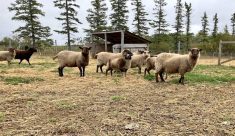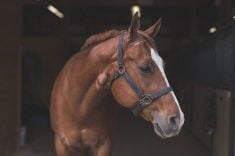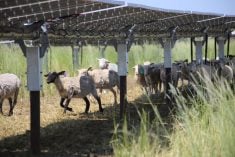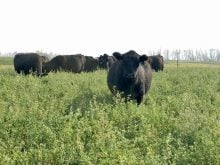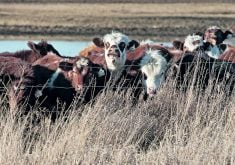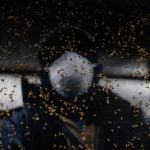The dictum applies to many things, including lambing losses – prevention is the best cure, says a producer who runs a flock of 2,000 ewes near Wetaskiwin.
Stefan Kaiser told a recent sheep symposium here that good management protocols are the best methods of keeping lambs alive.
Maintaining biosecurity is one of the most important things that can be done to keep a flock healthy, said Kaiser. He believes in keeping lambs away from manure-filled and dirty environments, and following proper health protocols.
Pregnant ewes are given shots of vitamins A, D, E and selenium, which has helped reduce the mortality rates of lambs born at the Kaiser farm, especially during the first 48 hours of their life. “It’s been a tremendous success for us,” said Kaiser. “I don’t know how it will work for everyone, but if you have problems with lambing loss, I’d recommend checking the vitamin levels in your animals,” he said.
Read Also

Mosquito-borne virus could be devastating to sheep breeding operations
Cache Valley virus, a mosquito-borne disease that infects small ruminants, could be a devastating hit to small operations.
The Kaisers, who lamb year round, bed up daily in the lambing barn, and give ewes clean water each day to reduce contamination. Ewes are shorn prior to lambing as shorn ewes put out less heat and moisture in the barns, which makes the environment healthier for the lambs. Kaiser says shorn sheep are also more likely to notice if they lay down on a lamb.
Once a ewe has lambed, she is moved into the lambing shed for at least 48 hours. Her time in the lambing shed is extended if she has birthing problems. “This is an excellent time to prevent lambing losses, said Kaiser. He milks out the ewe and takes this time to make sure that the lamb receives colostrum. “Lambs will not live if they do not get colostrum,” he said.
KEEP GOOD RECORDS
He uses the farm’s RFID traceability tool to record the data about the ewes and their mothering instincts. If the ewe doesn’t produce milk or is a poor mother, the Kaisers will make a decision about culling.
Kaiser advised to consider the safety of the lambs by using enclosed barns and tight fencing. Lambs that go into the creep feeding area should have access to some free-choice feed and some protection against coccidia, which can cause weakness in lambs and damage their intestines, resulting in lost dollars.
Once the lambs are weaned, they go into the feedlot pen where they are given a barley and alfalfa silage mixed with a whole barley. The Kaisers have found that they have reduced their death losses by finishing on a mixed diet.



